Ukrainian President Volodymyr Zelenskiy visited Brussels on June 4 and 5, where he met with the leadership of the European Union and NATO. He reaffirmed Kyiv’s goal of integrating into both institutions—goals enshrined earlier this year as strategic objectives in Ukraine’s constitution.
At their April meeting to mark NATO’s 70th anniversary, NATO foreign ministers noted their commitment to the alliance’s “open door” policy for countries that aspire to membership. Russian aggression over the past five years has only solidified domestic support within Ukraine for membership, though the path to achieving that objective faces serious obstacles.
Growing support for NATO in Ukraine
When NATO leaders in July 1997 invited Poland, the Czech Republic, and Hungary to join the alliance, they also stated the “open door” policy. That reaffirmed Article 10 of the Washington Treaty that established NATO, which reads in part: “The Parties may, by unanimous agreement, invite any other European state in a position to further the principles of this Treaty and to contribute to the security of the North Atlantic area to accede to this Treaty.”
President Leonid Kuchma publicly declared Ukraine’s interest in NATO membership in May 2002. Washington expressed support while noting that Kyiv had to do its homework, that is, it had to adopt the kinds of democratic, economic, and military reforms that the alliance asked of other aspirants. During the remainder of Kuchma’s time in office, however, Ukraine made little tangible progress in those areas.
In 2006, President Victor Yushchenko attached high priority to securing a NATO membership action plan (MAP). By summer, Kyiv looked on course to attain a MAP when alliance foreign ministers met that December. Curiously, Moscow did not come out hard against the idea. The prospective MAP derailed, however, after Yushchenko appointed Victor Yanukovych as prime minister. During a September visit to Brussels, Yanukovych said he did not want a MAP. The proposal died given the divided position of Ukraine’s executive branch.
Yushchenko called for a MAP again in January 2008, this time with the support of Prime Minister Yuliya Tymoshenko and Rada (parliament) Speaker Arseniy Yatseniuk. Moscow came out in full opposition. When Yushchenko visited the Russian capital that February, he had to stand alongside and listen to President Vladimir Putin threaten to target nuclear missiles on Ukraine. Instead of lobbying allies to support a MAP for Kyiv, Washington waited until the April Bucharest summit, where President George W. Bush attempted to persuade his counterparts to grant Ukraine (and Georgia) a MAP. However, a number of allied leaders by then had made up their minds and opposed the idea. Concern about Russian opposition undoubtedly played a role.
When Yanukovych became president in early 2010, he reiterated his lack of interest in NATO membership, and the issue went dormant. That changed after the 2014 Maidan Revolution, Yanukovych’s flight to Russia, Russia’s use of military force to seize Crimea, and Russian aggression in the eastern region of Donbas. President Petro Poroshenko increasingly stressed the importance of Ukraine joining the alliance.
In February 2019, the Rada overwhelmingly approved an amendment to the constitution that fixed membership in the European Union and NATO as strategic goals for Ukraine. While opinion polls prior to 2014 showed, at best, lukewarm public support for NATO membership, that has shifted with the continuing fighting in Donbas. Polls over the past four years have shown pluralities—in some cases, even a majority—favoring joining the alliance. For example, a January 2019 survey had 46 percent in favor as opposed to 32 percent against.
President Zelenskiy, who assumed office on May 20, also expresses support for NATO membership. In Brussels he stated that he would continue Kyiv’s “strategic course to achieve full-fledged membership in the EU and NATO.”
The elephant in the room: Russia
Ukraine still has much to do to meet the criteria for NATO membership. MAPs are intended to serve as guides for prospective members to fulfill those criteria. Objectively, Ukraine is as far along as countries that received MAPs in 1999. What has blocked Ukraine’s MAP ambition is Russia and the deference that some NATO members give to Moscow’s views.
Another reason for the alliance’s reluctance to grant a MAP is that MAPs do not convey an Article 5 security guarantee. (Article 5, the heart of the NATO treaty, provides that an attack against one member will be considered as an attack against all.) NATO lacks a good response to the question: What does the alliance do if an aspirant receives a MAP and then—before it becomes a full member—comes under attack?
The Kremlin clearly wants to return Ukraine to Russia’s orbit, though its actions over the past five years have had the opposite effect. Russia’s illegal annexation of Crimea and its ongoing aggression in Donbas, which has taken more than 13,000 lives, have persuaded Ukraine’s political elite and much of its population of the need to anchor Ukraine solidly in European and trans-Atlantic institutions and reduce relations with Moscow.
If the Kremlin cannot return Ukraine to its orbit, Plan B apparently is to break it. That would explain Russia’s hybrid war and economic sanctions against Kyiv as well as continued fueling of the fighting in Donbas. Moscow aims to pressure, distract, and destabilize the Ukrainian government in order to hinder its efforts to adopt a full set of reforms that would spur economic growth; to frustrate Ukraine’s ability to implement the provisions of the Ukraine-EU association agreement; and to make Ukraine appear an unattractive partner for the West.
Russia pursues this course despite its professed adherence to the principles of the 1975 Helsinki Final Act. Those principles include “the right to belong or not to belong to international organizations, to be or not to be party to bilateral or multilateral treaties including the right to be or not to be a party to treaties of alliance.” Moscow plainly does not want to allow Kyiv the right to choose whether or not to be a party to NATO.
Moscow plainly does not want to allow Kyiv the right to choose whether or not to be a party to NATO.
The Kremlin’s backing away from this (and other principles) of the Helsinki Final Act reflects a conclusion in Moscow that the post-Cold War European security order has evolved in ways that disadvantage Russia’s interests. The Russian leadership thus has set out to disrupt that order (Crimea has its antecedents in Transnistria, South Ossetia, and Abkhazia). Russian officials may well have taken note of NATO’s September 1995 study of the how and why of enlargement. That study said: “Resolution of [ethnic disputes or external territorial disputes] would be a factor in determining whether to invite a state to join the Alliance.” The Kremlin has sought to create territorial disputes in the post-Soviet space, and some NATO members fear that giving Ukraine membership now would confront the alliance with an immediate Article 5 contingency against Russia.
Finding a way forward is hard
It may well be that Moscow requires some idea of what a future European security order might look like, including the relationship between Ukraine and NATO, before it moves to resolve the conflict in Donbas. At this point, however, it does not appear that any Track I channels are discussing that question. Nothing suggests that it has come up in the Normandy configuration involving officials from Ukraine, Russia, Germany, and France.
This is an extraordinarily difficult question. In thinking about a European security order, how can one reconcile the view of Kyiv—and of most of the West—that Ukraine, a sovereign and independent state, should have the right to choose its own foreign policy course, with Russia’s demand for a sphere of influence that includes Ukraine?
Some have offered solutions to this dilemma. My Brookings colleague, Michael O’Hanlon, has proposed establishing a zone of permanently neutral states running from Sweden and Finland in the north down to the Black Sea and the Caucasus, with their security guaranteed by both NATO and Russia. Russia would withdraw its forces from Georgia, Ukraine, and Moldova, and the West would lift economic sanctions on Russia. NATO would abandon further enlargement, though states in the neutral zone could join the European Union.
This is an interesting “outside-the-box” idea, but it would not work. Many of those states (not just Ukraine and Georgia, but also Sweden and Finland) would not agree to be consigned to such a zone. And Moscow opposes EU membership for post-Soviet states; the Russians pressed Yanukovych not to sign the association agreement with the European Union when he had made clear his lack of interest in deepening relations with NATO.
The best idea that I have been able to come up with is that Ukraine, Russia, and NATO agree that Ukrainian membership in the alliance is a matter of not now, but not never. That would likely please neither Kyiv nor Moscow, but it could offer a way to kick a difficult can down the road.
NATO membership for Ukraine is unlikely in the near term. For the foreseeable future, Ukraine should continue to deepen its practical cooperation with the alliance. Much, if not all, of a MAP can be put into Kyiv’s annual action plans. Moscow’s principal objection appears to be to the name of the plan, not the content. The focus then should be on implementation. Ukraine should seek to prepare itself as much as possible—not just in terms of defense and security reforms, but also in solidifying its embrace of the democratic and market economy values of the alliance. That will put Ukraine in position to take advantage if/when an opportunity emerges and NATO is ready to consider membership.
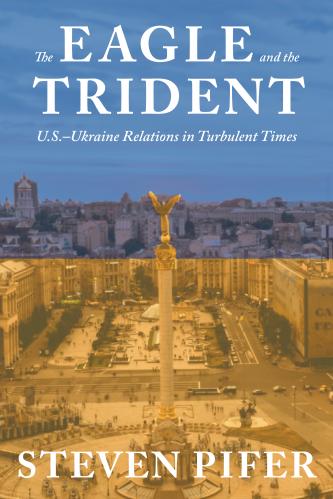
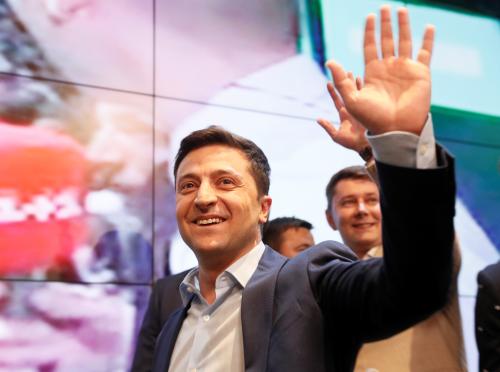
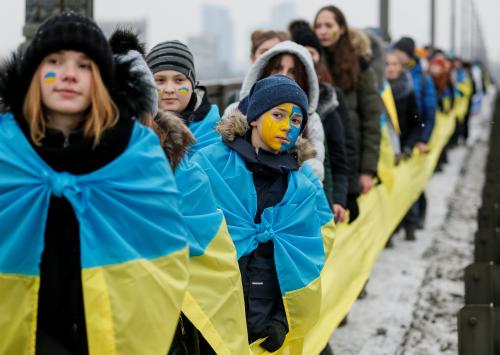
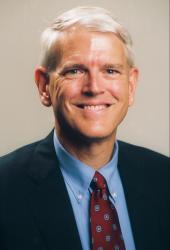
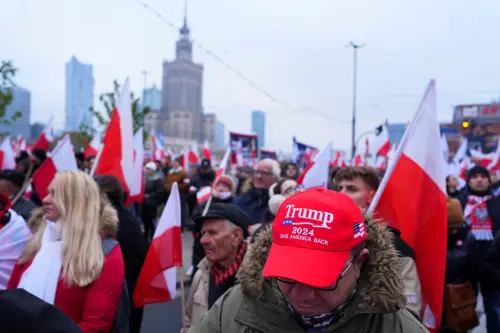

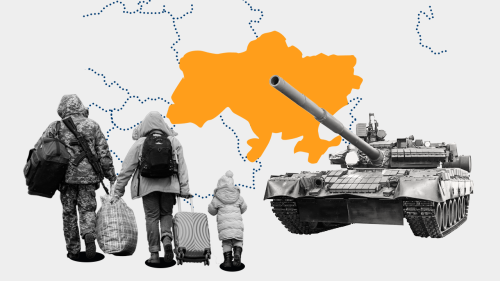
Commentary
NATO’s Ukraine challenge
Ukrainians want membership, but obstacles abound
June 6, 2019